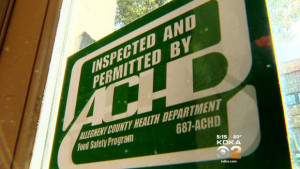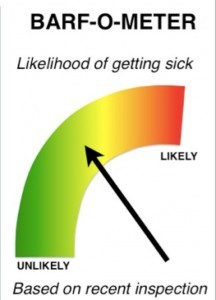This is not the hockey I grew up watching, where players had a smoke and a beer between periods. This is fast, fun and furious.
 And if Nashville can embrace hockey (the ice kind for my Aussie friends) so can anyone.
And if Nashville can embrace hockey (the ice kind for my Aussie friends) so can anyone.
Pete Blackburn of Fox Sports writes:
So, what sport is this now?
Hockey.
Isn’t that the Canadian thing with the ice and skates that no one seems to care about?
Well, some of us care, and not just in Canada. But yes, it’s played on ice.
But why should I care now?
Because playoff hockey is amazing and one of the greatest viewing experiences in sports. At the end of the Stanley Cup Final all the players say the f-word on TV as they pass around giant trophy that everybody gets to kiss. It’s a lot of fun.
So, who is playing in this “Stanley Cup Final?”
The Pittsburgh Penguins and the Nashville Predators.
Wait, you mean to tell me Nashville, Tennessee has a hockey team?
Yep! They’re quite good and the city has grown to love them. It’s becoming a really fun hockey town and their crowds are wild and loud. They probably have one of the best playoff atmospheres in hockey. They’re really good at shouting mean things at opposing players in unison.
You also mean to tell me that there are “hockey towns” in the United States?
Yes, and this Final features two pretty good ones. In fact, a Canadian team hasn’t won the Stanley Cup since 1993.
That must be embarrassing for them.
Yeah, let’s not get into that.
Well, which one of these teams is better?
Well, the Penguins are the defending champions and they have a very good team with a few of the best players in the world (Sidney Crosby and Evgeni Malkin) so they’re slight favorites to win the Stanley Cup, even though they’re without their best defenseman (Kris Letang).
So I should root for them?
Sure, if you want to. They’re great at scoring goals (fun!) and it would be the first time in nearly 20 years that a team has won the Cup in back-to-back years.
How many Cups have the Predators won?
Zero. This is the first time they’ve even made it to the Final.
So they’re a bunch of losers?
No, that’s the Capitals. The Predators are just sort of new to the party. They’ve only been a team since 1997. The Penguins were founded 30 years before that. Nashville has a bright future.
Do the Predators actually have a chance?
Some of their better offensive players got hurt earlier in the playoffs but they’ve still got talented scorers like Filip Forsberg, Viktor Arvidsson and James Neal. They definitely still have a chance, mainly because their defense is so good, and that tends to be a huge factor in the playoffs.
Defense is for nerds.
 Somewhat agree, but the Predators defense is pretty good at scoring goals themselves. They’ve got a few impressive defensemen that are good at creating offense, including P.K. Subban.
Somewhat agree, but the Predators defense is pretty good at scoring goals themselves. They’ve got a few impressive defensemen that are good at creating offense, including P.K. Subban.
P.K. what now?
Pernell-Karl Subban. He’s on the Predators and is one of the best defensemen in the league. He scores a lot of goals and usually has awesome celebrations afterward. Plus, he’s funny and is really nice to sick kids. He once pledged to raise $10 million for a children’s hospital.
Oh, wow. Who wouldn’t love that guy?
Well…
What?
Well, he was actually traded to Nashville last summer by Montreal in a really surprising deal. He kinda got unfairly blamed for some of their disappointing playoff finishes and a lot of people think the Canadiens didn’t like his “character issues.”
What kind of character issues? Isn’t this the sport where the grown men are allowed to punch each other in the face?
Yeah, but some people apparently think that Subban is a clown for attracting attention to himself by having a lot of fun. The thought was that he “doesn’t hate to lose” enough. So they traded him for an older, more boring guy named Shea Weber.
How did that work out?
Well, the Predators are playing for the Stanley Cup and Montreal lost in the first round.
Oh. Yikes.
Yeah.
Is there anyone like that on the Penguins?
Well, a guy named Phil Kessel won a Stanley Cup in his first season with the Penguins last year. He’s awesome and goofy and really good at scoring goals. Toronto basically ran him out of town, too.
Why did they do that?
The team stunk so some of the media unfairly pinned it on him and said he was lazy, didn’t care enough and ate too many hot dogs.
Wait, what?
Nevermind. Let’s just move on.
So, yeah, you should definitely watch the Stanley Cup Final. You’ll either get to see a new-ish team with a wild fan base win their first-ever championship, or you’ll get to see some legends become the first repeat champions in almost two decades. Either way, it should be really fun and exciting, even if you’re not a big hockey fan.
But it sounds like both of these teams are enjoyable and likeable. Who do I choose?
Do you care about uniforms?
No, what kind of adult cares about sports uniforms?
I do. A lot.
Nerd. Who has the better uniforms?
Pittsburgh, by a mile. Their jerseys are some of the nicer ones in the league. The Predators dress like bottles of spicy mustard.
Go Predators.
Go Penguins.
Despite some first period jitters in game 1, I predict Predators in 7. And stay away from my bench (upper left, a look I perfected on graduate students who would submit writing but they hadn’t really tried; I’d get through one page and respond, try again).
 In a tradition that dates from 2003, Nashville supporters tossed catfish onto the ice during the playoffs, and sometimes went to great lengths to smuggle the fish into the arena.
In a tradition that dates from 2003, Nashville supporters tossed catfish onto the ice during the playoffs, and sometimes went to great lengths to smuggle the fish into the arena.











.jpg) any time soon.
any time soon.